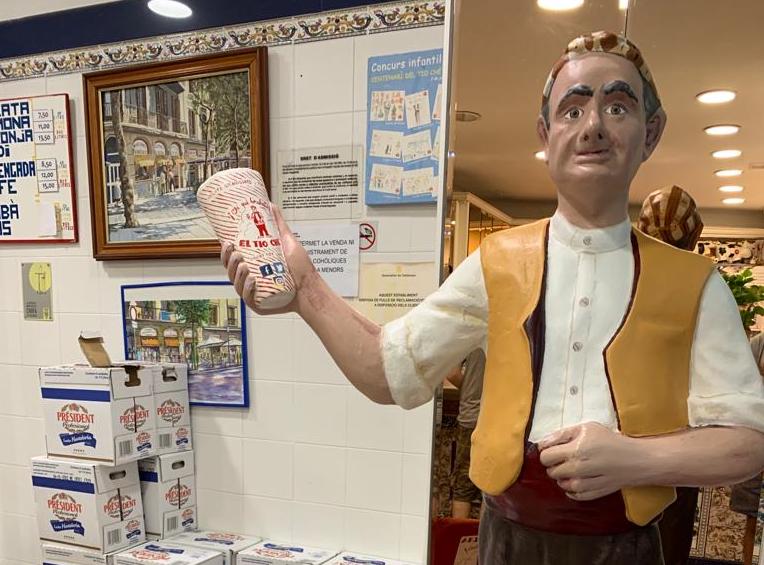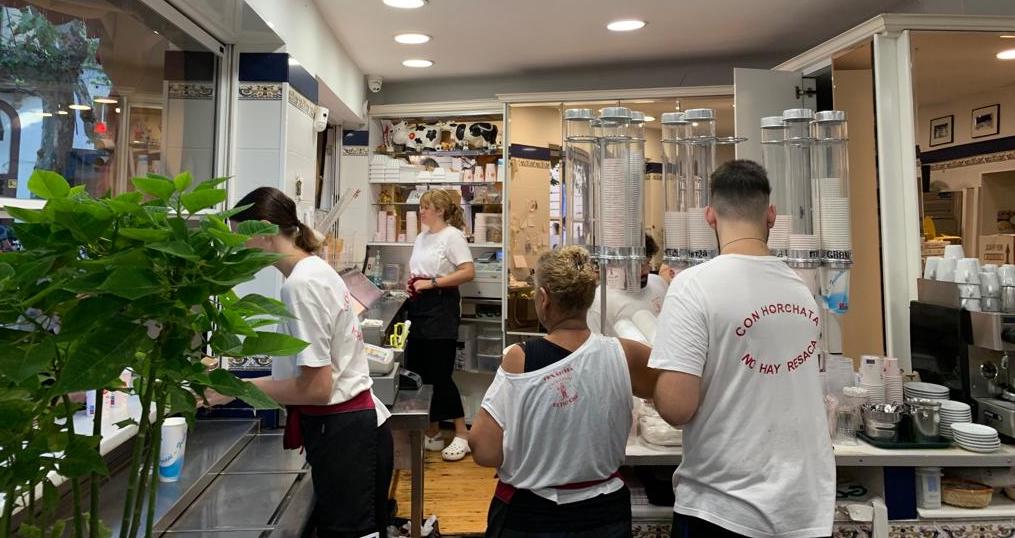Horchata: The Acquired Taste You Won’t Regret
Horchata de chufa (orxata de xufa in Catalán) is as quintessential to a Spanish summer as is a tinto de verano, but most visitors that come don’t know about it!

Horchata is the most refreshing thing you can bless yourself with on a hot Spain summer day. It teleports me back to days spent with my family in el Retiro park in Madrid. My mom would insist on getting an horchata — a drink that the park bungalows only served during the summer. At first I thought she was insane, it tasted so strange to my 7-year-old mouth.
It is one of those things like coffee, beer, or tobacco — you need to acquire a taste for it. The good thing is that if you do get hooked, you won’t end up with a caffeine addiction or a drinking problem. Instead, you’ll just have an eager appetite to go sweat in the park and earn that cold, white drink of summer.
I am here to give you the down low on what it is, where to get it, and how to enjoy it.

What is Horchata?
Horchata is a plant milk. It is made from something that might be unfamiliar to many: tiger nuts. A misnomer, tiger nuts are not actually nuts but a very small tuber, like a potato. They are chewy and taste somewhere between an almond and a pecan. They are high in fiber, and a great source of magnesium and potassium.
Since you probably have already made a joke about it, I'll share with you this story about a friend visiting from Romania. I took him to get horchata because it was summer, we were in the park, and that’s just what you do, people. I explained to him that it was a drink made from tiger nuts and he was skeptical at first but ended up going for it and loving it. It was not until months later when he had done some of his own research on it that he admitted to me – I kid you not – that he had thought that it was made from the testicles of a tiger. To his defense, we had just spent 6 months in south east Asia where we did eat some foods that were pretty out there for our European tastes.
Anyways, back to the making of this thing. Horchata is sweetened with sugar, though most places also offer a sugarless version. Pro-tip: ask for half with sugar and half without – it hits the sweet spot.
The drink originated in Alboraya, near Valencia. After a quick Wikipedia consult, I found out that it has had its roots there since the 13th century. Now, you can find it all over Spain. There are also versions of it throughout Latin America and Western Africa.
In 2014, McDonald’s even tried to sell an horchata flavored frappe in southern California. Seeing as it’s not currently a McDonalds staple, I’m guessing it didn’t take off like they had hoped.

Where to get Horchata in Barcelona
Before I tell you were to get it, I must tell you where not to... Do not buy a carton from a grocery store. At least not for your first (or fiftieth) exposure. This plant milk is best enjoyed freshly blended.
Many ice cream places also sell horchata, but to find your best pick, look for an horchatería (that also sells ice cream?). Signs you’ve hit the horchata jack pot include:
- The establishment looks like it has been there since the 1920s
- It is loud and crowded
- You can see big metal boxes full of the good stuff
- The boxes are so big they have to ladle it out with what looks like a cup attached to a broomstick
If you find a place that does check all of these boxes, you are bound to have a great first horchata. If you do not want to risk it, you could just beeline it for some of my favorite Barcelona horchaterias.
- El Tío Che in Poblenou
- Horchateria Sirvent in Sant Antoni (they also have a branch on Diagonal)
- La Valenciana in Eixample
If you absolutely fall in love, take home a 1 or 2 liter to-go bucket (it will last 2-3 days in your fridge).

How to enjoy it
You already know the pinnacle of horchata enjoyment – go to the park, work up a sweat, then sit back and sip on that sweet sweet nectar. But you can enjoy it any time any place – like ice cream. Some horchaterías do close in the winter, but I know El Tío Che is here for us 365.
For the full-blown authentic experience, enjoy a glass with some fartons. This is a sugary confection existing somewhere between a breadstick and a donut. Dip them in your horchata for a sweet, cold snack that explodes in your mouth.
This brings me to another important point – temperature. You need your horchata cold. I’ll repeat that – you need your horchata cold. There is *nothing* worse than a warm horchata. I am sure I have some people who are already disagreeing with me. The way I see it, there are 3 spectrums when it comes to your horchata experience – temperature, sweetness and freshness. See my personal preferences below.

Once you pass horchata level one, there are plenty of options to mix it up. Granizados de limón or civada are some popular offerings, served on their own or half and half with horchata. I have also seen horchata floats with ice cream! Any combination is sure to help you beat the heat and have a truer Spanish summer experience.
Get out there and try some horchata. It will add a whole new dimension to your Spanish summer. When you first come to Spain, you think about sangria, paella and jamón. But, horchata is just as unique of a Spanish offering! Remember, it is an acquired taste, so if you do not like it the first time, don’t give up – you too can have those white beverage tinted summer memories.
